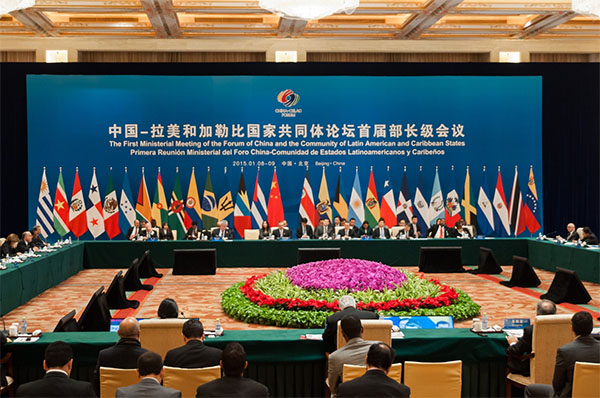Executive summary
“It would be a mistake to interpret China’s presence in Latin America as a zero-sum game […] It is a matter of an open-ended and complex process, the outcome of which is still uncertain for Spain. It is an outcome that will be shaped by the measures taken to meet the challenge.”
Relations between China and Latin America are complex, strengthening, notably asymmetrical and fundamentally economic. Ties have intensified rapidly in recent years, to the extent of shaping the evolution of countries in the region and their processes of regional integration. Spain cannot afford to remain indifferent to this phenomenon, given its close links to this part of the world.
The strengthening of ties between China and Latin America has a double-edged impact on Spanish interests. On the one hand, the headway that China is making in the region translates into a loss of Spanish influence and attraction in one of the traditional spheres for Spain’s foreign policy. On the other hand, the greater presence of China can contribute to the development of the region and is generating opportunities for cooperation and synergies with Spanish players, both public and private, on multiple stages.
In fact, China’s increased interest in Latin America may also translate into greater attention being paid to Spain, thanks to the latter’s degree of sway and experience in the region. Spain would thus figure as a more important diplomatic partner for Beijing, Spanish companies as more attractive recipients of investment and the Spanish language as a global communication tool.
Spain maintains close links with Latin America, which manifest themselves in, for example, substantial investments and innumerable exchanges and personal ties. Hence it is extremely positive for Spain that Latin America should fare well. This report will defend the position that in general terms Latin America’s relations with China are positive for the development of the region, thanks fundamentally to the transfer of financial surpluses and the construction of infrastructure. In any event, the slowdown in the Chinese economy in the short to medium term and its impact on the price of raw materials will act as a brake on the region’s development prospects.
Various Spanish companies have sought out synergies and shared interests with the Chinese enterprises that are expanding into Latin America, and in the main have drawn positive conclusions about the new arrivals. The only sector in which there has so far been a greater degree of competition between Chinese and Spanish companies is in infrastructure and civil engineering. This will probably change in the future as Chinese investments in the region diversify. At the time of writing, the market position of Spanish companies has not been threatened in other sectors. On the contrary, the possibility has opened up for cooperation that is mutually beneficial to firms from both countries: whether in terms of providing services to Chinese enterprises and complementing their offer or through Chinese acquisitions of Spanish assets enabling such enterprises to embark on large-scale projects in Latin America or to reposition their presence in the region.
This should not disguise the limitations and the sense of fatigue that seems to beset the strategy employed by Beijing to favour its presence in the region. China has resorted to a State-to-State model of interaction as a means of opening doors for its companies. A clear demonstration of this is the fact that the sum of its loans to Caracas is equivalent to the aggregate of Chinese direct investment in the whole of Latin America. In this way Beijing uses its considerable liquidity to underwrite contracts for its companies in opaque conditions, with little competition and relatively lax working and environmental standards. This notably reduces the positive effect of economic transactions with China in terms of its impact on development in Latin America, which in turn rebounds negatively on its image and on the sustainability of the rhythm at which it is currently strengthening its ties with the region.
In this context, Beijing understands that its relationship with Latin America would be more effective if it benefitted from greater knowledge of the region; if its companies knew how to deploy themselves better in these markets and adhered more scrupulously to local laws and norms; and if its financial commitments translated into greater economic development for the recipient countries. Various official pronouncements issued this year along similar lines, for instance during the first China-CELAC ministerial summit and Li Keqiang’s tour of Latin America, have gone further in this direction. Chinese strategy in the region seems to be moving towards investment of higher quality, incorporating sectors characterised by more advanced technology and greater knowledge content, thereby contributing to the region achieving a qualitative leap forward in its industrial fabric. This gives rise to a new scenario with significant opportunities for Spain and its companies, but also an enormous challenge, since Latin American countries will prioritise relations with the actor who can most help them insert themselves into the global value chains and diversify their economies.
In conclusion, it would be a mistake to interpret China’s presence in Latin America as a zero-sum game, because to do so would mean missing out on attractive opportunities for cooperation. It is a matter of an open-ended and complex process, the outcome of which is still uncertain for Spain. It is an outcome that will be shaped by the measures taken to meet the challenge.
First Ministerial Meeting of China-CELAC Forum (8-9 /1/2015). Photo: Cancillería de Colombia



